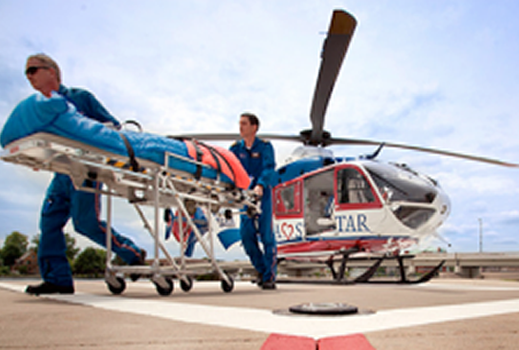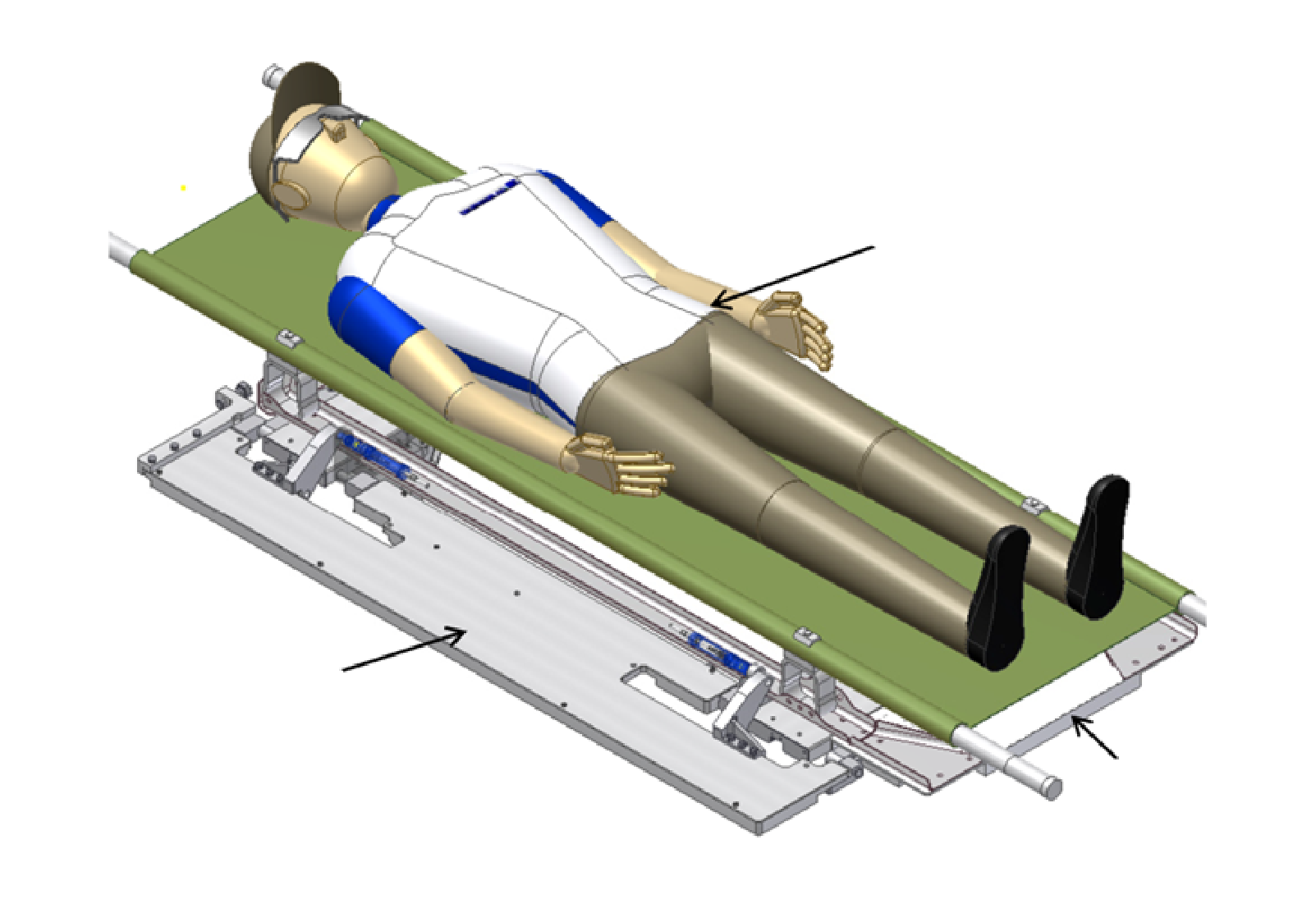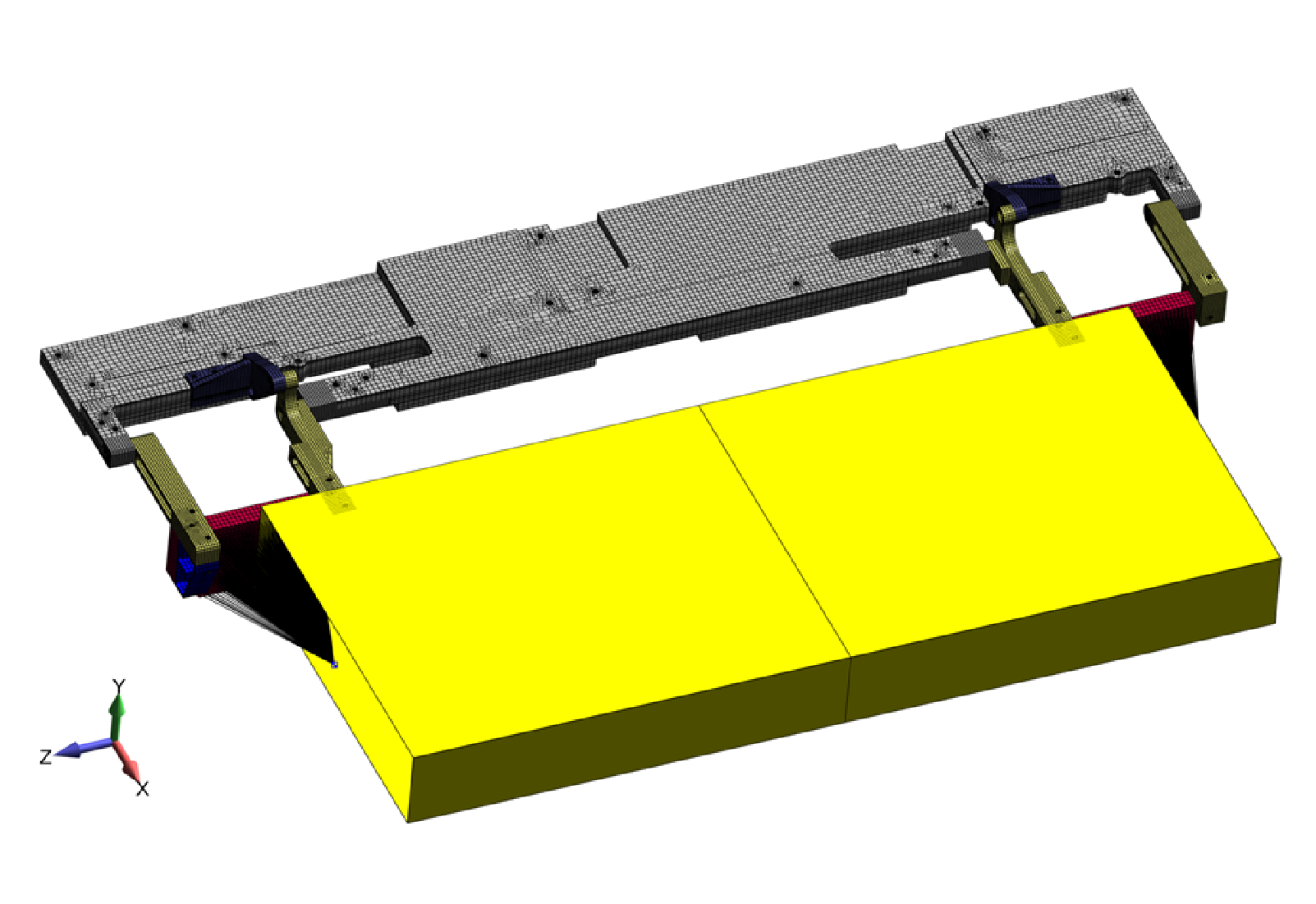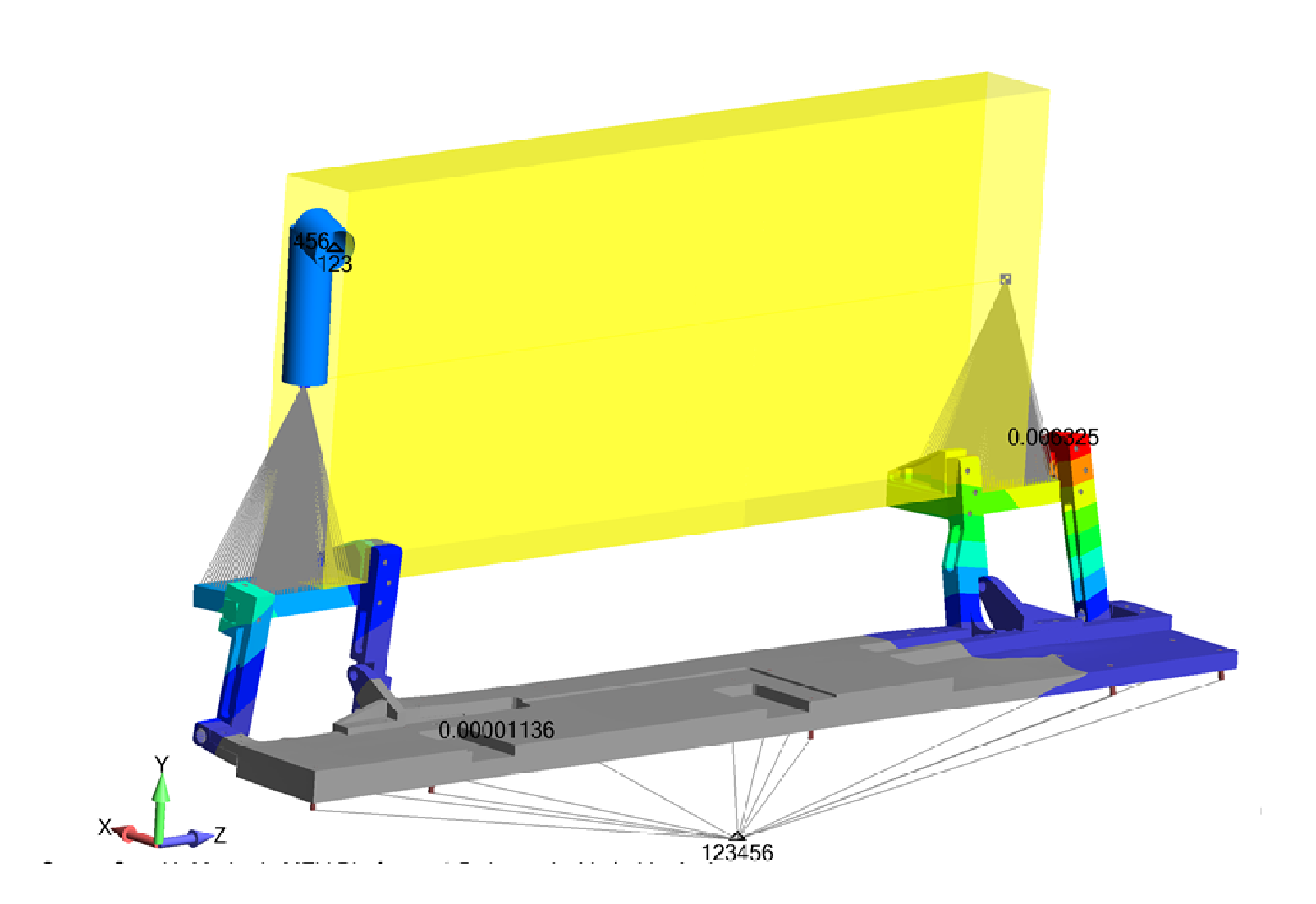Stress and PSD Analysis of Lightweight Patient Stretcher for Airborne and Military Applications

Analysis
Objective
The safe medical transport of patients implies that the patient can be moved from point A to point B without harm. Having a patient stretcher that doesn’t break or eject the patient into space is fundamental toward that goal of “safe transport”.
Introduction: Predictive Engineering was engaged to assist a large air transportation and medical emergency services company develop their next generation of patient stretchers. These platforms are made from high-strength aluminum and must resist a broad range of g forces and shock loading while carrying very large patients. Additionally, they are subjected to high-frequency white noise vibration from rotating-blade aircraft and rough military transport. This latter specification is covered within MIL-STD-810E.
The analysis model was built using high-efficiency brick elements and the various pins and bolts idealized as combinations of beam and rigid elements. The resulting FEA model was numerically efficient and allowed multiple complex analyses to be performed in minutes. The model was exercised through static g loading, modal analysis and the resulting modal combination methods for shock and PSD analyses.
Stress results from the various load cases were combined to create in-service load profiles. Designs changes were suggested to improve the structural performance of the stretcher. At the end of this process, the client passed external review and had greater confidence that no unexpected structural failures would occur in service.
Keywords: FEA analysis, Femap, NX Nastran, DOE Military Specification, MIL-STD-810E, Modal Analysis, Shock Analysis, Natural Frequencies, random vibration, PSD, Power spectral density, Fatigue Analysis, MMPDS, finite element analysis, stress optimization, medical,



